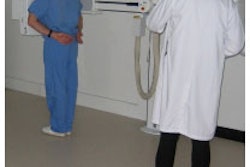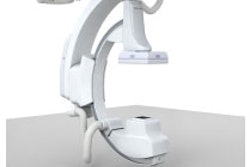All forms of radiography are moving toward an all-digital environment. And despite the heavy use of CT, the common x-ray still has its place in orthopedics, trauma, and other areas.

Digital images can be acquired with cassette-based or cassetteless computed radiography (CR) technology or direct radiography (DR) systems. CR captures digital images on a receptor, typically using storage phosphor technology. DR involves direct capture of images on a flat-panel digital plate that sends an image to a display system or a PACS for archiving.
CR is less expensive but typically does not offer the same productivity benefits and cost savings as DR, as the technologist must handle cassettes. CR can be a good solution for smaller institutions with fewer studies, and it provides a useful transition from film to digital. DR becomes more profitable than CR only when the productivity of each is optimal.
With increasing implementation of DR, integration of DR and CR can be a challenge. Exposure control and other parameters must be similar so that image density, lightness and darkness, and other crucial elements don't vary from CR to DR.
A number of factors are key to a seamless conversion to digital, whether it is done gradually or all at once. Facilities should assess their imaging needs, gather budgeting information, compare vendors and the options they offer, and then put their plans into action.
The links below provide more information about the advances in x-ray that will be showcased at this year's RSNA meeting. Click on each company's name to find out what they have to offer.



















